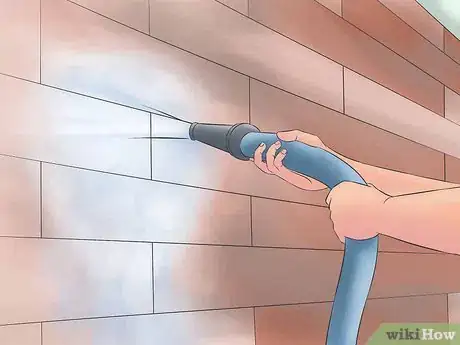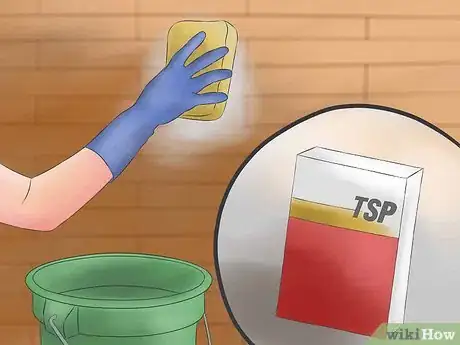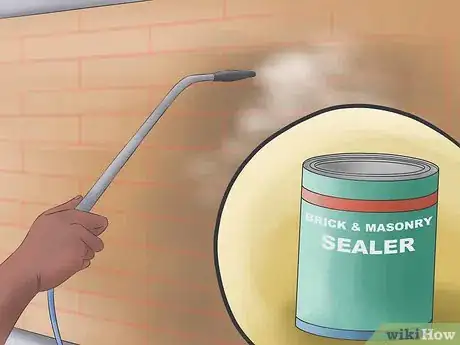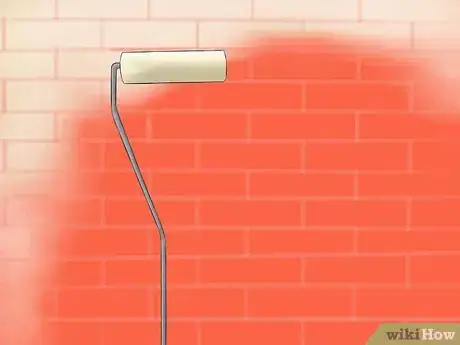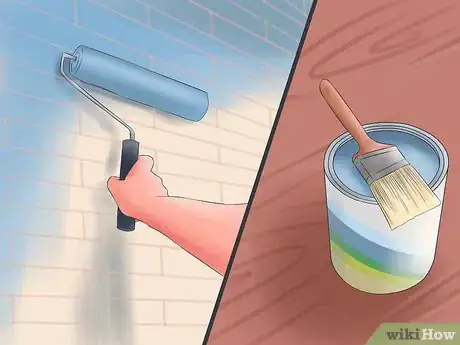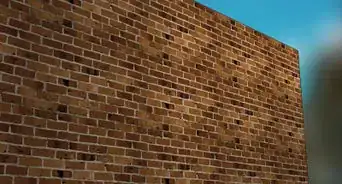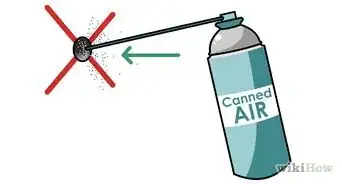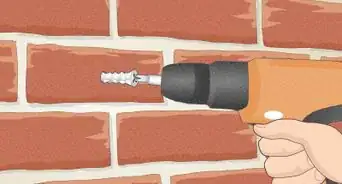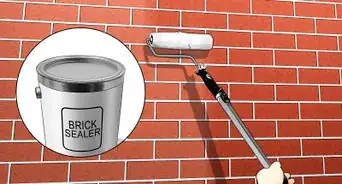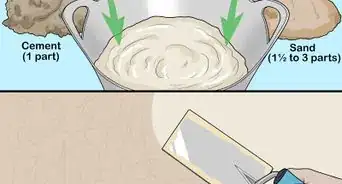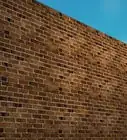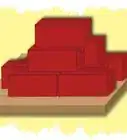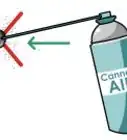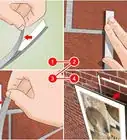This article was co-authored by James Guth. James Guth is the co-owner and founder of Chesapeake Painting Services LLC. With over 20 years of experience, James specializes in exterior and interior painting, drywall, powerwashing, wallpaper, staining, sealing, and carpentry. James holds a BS in Economics and Business Administration with a concentration in Finance from Towson University
There are 10 references cited in this article, which can be found at the bottom of the page.
wikiHow marks an article as reader-approved once it receives enough positive feedback. In this case, 98% of readers who voted found the article helpful, earning it our reader-approved status.
This article has been viewed 252,796 times.
Painting a brick masonry wall can liven its appearance while still maintaining the character and tactile appeal of the brick pattern. Both exterior masonry and exposed brick on interior walls can be painted. Masonry is painted over using a very similar process to painting wood, drywall, or other common materials; in all cases, spending an adequate amount of time preparing the surface is key to a lasting, attractive paint job.[1] You will only need a few tools to paint masonry walls in your own home.
Steps
-
1Remove any flaked or peeling paint from the masonry. If the wall has already been painted, you need to remove any old paint that is loose, peeling, or flaking away.[2] On an exterior wall, this is most efficiently done with a sandblaster. In areas where a sandblaster would be too messy and cumbersome, loose paint can be removed with a stiff wire brush and a paint scraper.[3]
- Failing to remove loose and peeling paint can result in the paint flakes mixing in with your fresh coat of paint and marring the finish.
-
2Clean the brick wall.[4] Like other surfaces, masonry should be cleaned before painting. The best product for cleaning brick is trisodium phosphate (TSP).[5] This compound can be purchased in powder form at hardware stores, or a cleaning product that contains TSP can be used, such as Spic and Span.
- Mix the TSP with water in a bucket according to the manufacturer's directions. Apply the resulting mixture to the brick with a scrub brush, allowing it to thoroughly dry before proceeding with the painting process.
Advertisement -
3Apply a masonry sealer to the wall.[6] Because most masonry is more porous and more highly textured than materials such as drywall or wood, the extra step of applying a sealer is necessary before priming and painting. Masonry sealer can be purchased at home improvement stores, and is usually a latex-based formulation that is applied with a brush or roller just like paint. Some brick is not so porous and most paint will tend to peel. For this, an oil based pigmented bonding primer is superior if you can find it. It is slow drying and soaks deep.
- Because brick has such high relief, a paint roller with a long nap (about 1 inch / 25 mm) is the ideal tool for applying sealer. Use the roller to apply a single coat of sealer across your brick wall, cutting in around the edges with an angled-sash paintbrush if necessary.
- Allow the sealer to dry completely before proceeding to prime. Brushes and rollers can be cleaned with soap and water if using a latex-based sealer. Note that if your brick wall has already been painted, applying sealer is not necessary.
-
4Apply primer to the masonry wall. Both oil-based and latex-based primers will work well on masonry, and an interior or exterior product should be used based on your wall's location.[7] Masonry can be primed with the same primers used on drywall and other surfaces, but some manufacturers also offer specially formulated masonry primers that improve water resistance.[8]
- Like the sealer, the primer should be applied with a long-nap roller and an angled-sash brush. One coat is sufficient, and sanding is generally not necessary between the sealer and primer coats. Make sure that the primer covers all of the mortar joints in the wall; it may be necessary to touch these joints up with the brush.
- After allowing the primer to dry, give the brick wall a light scuff sanding with a pole sander equipped with medium-grit sandpaper. This will improve the paint's adhesion.
-
5Paint the brick wall.[9] Like priming, painting masonry can be accomplished with ordinary latex or oil paints, although masonry paints are available that increase the wall's ability to repel moisture.[10]
- It is best to use the same formulation for both your primer and paint. For example, if you used a latex primer, a latex paint will adhere better than an oil paint.
- Apply the paint using a long-nap roller in long, smooth strokes. Try to work quickly, as applying fresh paint over partially dried paint can cause flaking. If a second coat is desired, sand the wall lightly with a pole sander between coats.
Expert Q&A
Did you know you can get expert answers for this article?
Unlock expert answers by supporting wikiHow
-
QuestionWhat is the best primer to use when painting masonry walls?
 James GuthJames Guth is the co-owner and founder of Chesapeake Painting Services LLC. With over 20 years of experience, James specializes in exterior and interior painting, drywall, powerwashing, wallpaper, staining, sealing, and carpentry. James holds a BS in Economics and Business Administration with a concentration in Finance from Towson University
James GuthJames Guth is the co-owner and founder of Chesapeake Painting Services LLC. With over 20 years of experience, James specializes in exterior and interior painting, drywall, powerwashing, wallpaper, staining, sealing, and carpentry. James holds a BS in Economics and Business Administration with a concentration in Finance from Towson University
Painting Specialist
-
QuestionWhat is happening to my interior brick walls if there is a residue that looks like white chalk?
 Community AnswerSounds like a moisture problem. Use a wire brush and scrape it all down. Before painting, apply a water seal paint to the wall and let it dry. Be sure to cover the entire area, a roller works well. When thoroughly dry, apply the desired paint.
Community AnswerSounds like a moisture problem. Use a wire brush and scrape it all down. Before painting, apply a water seal paint to the wall and let it dry. Be sure to cover the entire area, a roller works well. When thoroughly dry, apply the desired paint. -
QuestionWhat sealer and paint do I use to main a masonry wall?
 Drew Hawkins1Community AnswerA latex sealer, primer, and paint will maintain the integrity of the masonry wall. You can also use concrete sealer and paint.
Drew Hawkins1Community AnswerA latex sealer, primer, and paint will maintain the integrity of the masonry wall. You can also use concrete sealer and paint.
Things You'll Need
- Sandblaster (optional)
- Wire brush
- Paint scraper
- Trisodium phosphate
- Water
- Bucket
- Paint stir sticks
- Scrub brush
- Masonry sealer
- Primer
- Paint
- Paint roller
- Long-nap roller cover
- Angled-sash paintbrush
- Pole sander
- Medium-grit sandpaper
- Mineral spirits (optional)
References
- ↑ James Guth. Painting Specialist. Expert Interview. 21 July 2020.
- ↑ https://www.bobvila.com/articles/how-to-remove-paint-from-brick/
- ↑ https://www.dummies.com/home-garden/exteriors/how-to-clean-masonry/
- ↑ https://www.bobvila.com/articles/how-to-clean-brick/
- ↑ https://www.naturalhandyman.com/iip/infxtra/infmur.html
- ↑ https://www.todayshomeowner.com/video/how-to-apply-masonry-sealer-to-basement-walls/
- ↑ https://www.architecturaldigest.com/story/how-to-paint-brick
- ↑ James Guth. Painting Specialist. Expert Interview. 21 July 2020.
- ↑ https://www.bobvila.com/articles/how-to-paint-brick/
- ↑ James Guth. Painting Specialist. Expert Interview. 21 July 2020.
- http://www.hometips.com/diy-how-to/paint-wallpaper-masonry.html
- http://www.masonryworktools.com/paintingbrickmasonry.html

